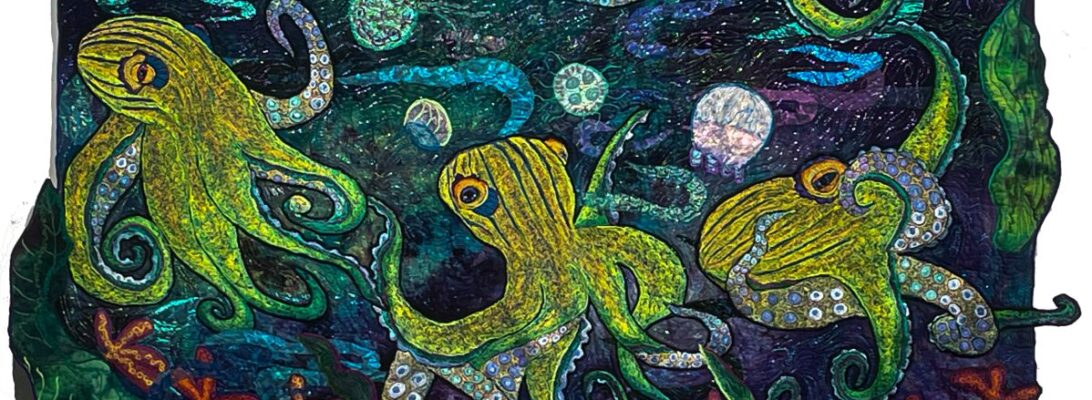
It’s that time of year, when I look at the pile of quilts at my feet and review what I did last year. I made 46 quilts this year, large and small.
Because of health issues, I haven’t pursued shows right now. My heart doctors say things are staying stable, and I have enough work to promise a show, so I will be doing that in 2025.
How does an upcoming show affect work? It means the niggly questions get put to the side. You produce as much as you can. So you don’t do things you need to ponder about for a while. No big experiments.
Since I wasn’t prepping a show, this was the year for those niggly questions. All kinds of experiments.
Waterfalls

I figured out how to make a waterfalls frp, organza and lace.
Pine Trees


I worked out a new way to make pine trees from cheesecloth.
Desert landscapes



I worked on deserts, sand and cactus.
Cloud Shapes

I studied clouds.
Sunflowers



And sunflowers.
Yellow Birds
I had a desperate need for small yellow birds.







Major Quilts
Here are the large quilts I finished.










Visual Paths
Here are the visual paths I made.


small work
Here are the little quilts




























It’s easy to feel like I’d done less this year. I have had years where I produced more. But I’m pleased with the questions I solved, the skills I built and the creatures new in my world. The quilts are really just a by product.
Most of these quilts are available for sale on my web and Etsy site. The Etsy sale is over, but you can always make an offer on a quilt, if it’s a bit out of range. And if you have work of mine, you can always trade up. Those of you who have quilts of mine are family, because you house my children. You always can have the family discount.
My Etsy Shop













































